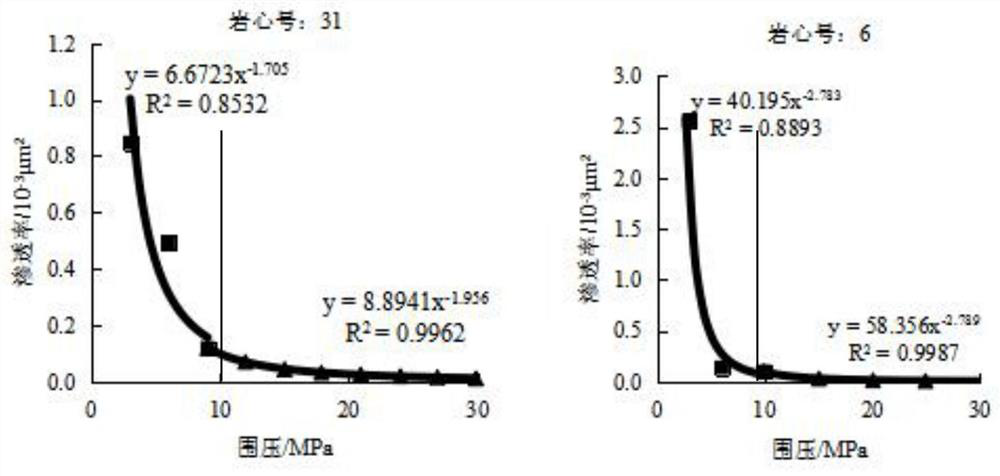A Classification Method of Carbonate Rock Pore Structure Based on Overburden Seepage Experiment
A technology of pore structure and carbonate rock, applied in the direction of permeability/surface area analysis, suspension and porous material analysis, analysis of materials, etc., can solve the problems that do not reflect the dynamic change characteristics of pore structure
- Summary
- Abstract
- Description
- Claims
- Application Information
AI Technical Summary
Problems solved by technology
Method used
Image
Examples
Embodiment 1
[0051] Such as image 3 As shown, for the carbonate rock cores in a certain area of the Qaidam Basin, a series of permeability-confining pressure curves were obtained by testing the oil phase permeability under different confining pressure conditions, and the permeability-confining pressure curves were plotted. The curve is divided into two parts, the high-pressure section and the low-pressure section, and then the data of the high-pressure section and the low-pressure section are respectively fitted. Combined parameter change rate △a and △b.
[0052] Table 1
[0053]
[0054] Table 2
[0055]
[0056] As shown in Table 1, the △a and △b of the cores with different pore structure types are quite different. According to the different ranges of △a and △b, the pore structure types of the cores can be divided.
[0057] Through core observation, it is found that, in terms of broad categories, there are two types of pore structures in the taken carbonate cores: fractures a...
PUM
| Property | Measurement | Unit |
|---|---|---|
| density | aaaaa | aaaaa |
Abstract
Description
Claims
Application Information
 Login to View More
Login to View More - R&D
- Intellectual Property
- Life Sciences
- Materials
- Tech Scout
- Unparalleled Data Quality
- Higher Quality Content
- 60% Fewer Hallucinations
Browse by: Latest US Patents, China's latest patents, Technical Efficacy Thesaurus, Application Domain, Technology Topic, Popular Technical Reports.
© 2025 PatSnap. All rights reserved.Legal|Privacy policy|Modern Slavery Act Transparency Statement|Sitemap|About US| Contact US: help@patsnap.com



